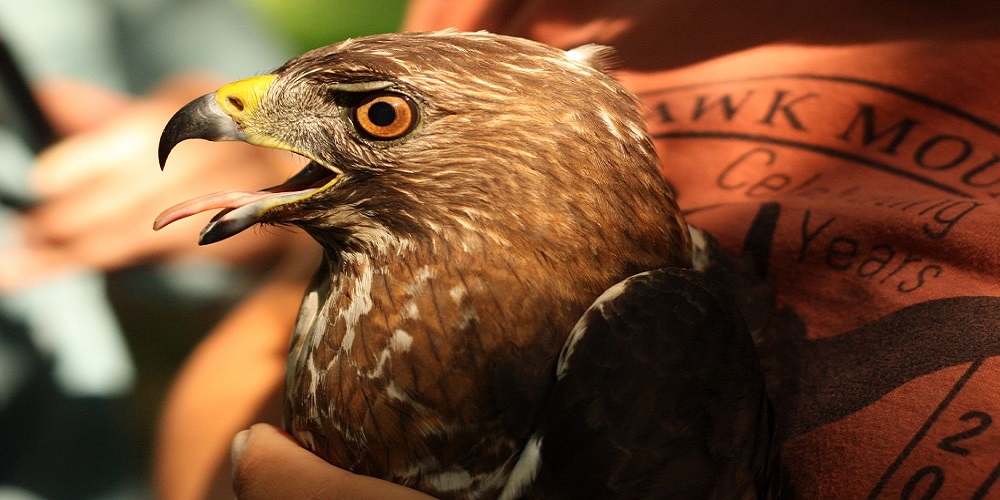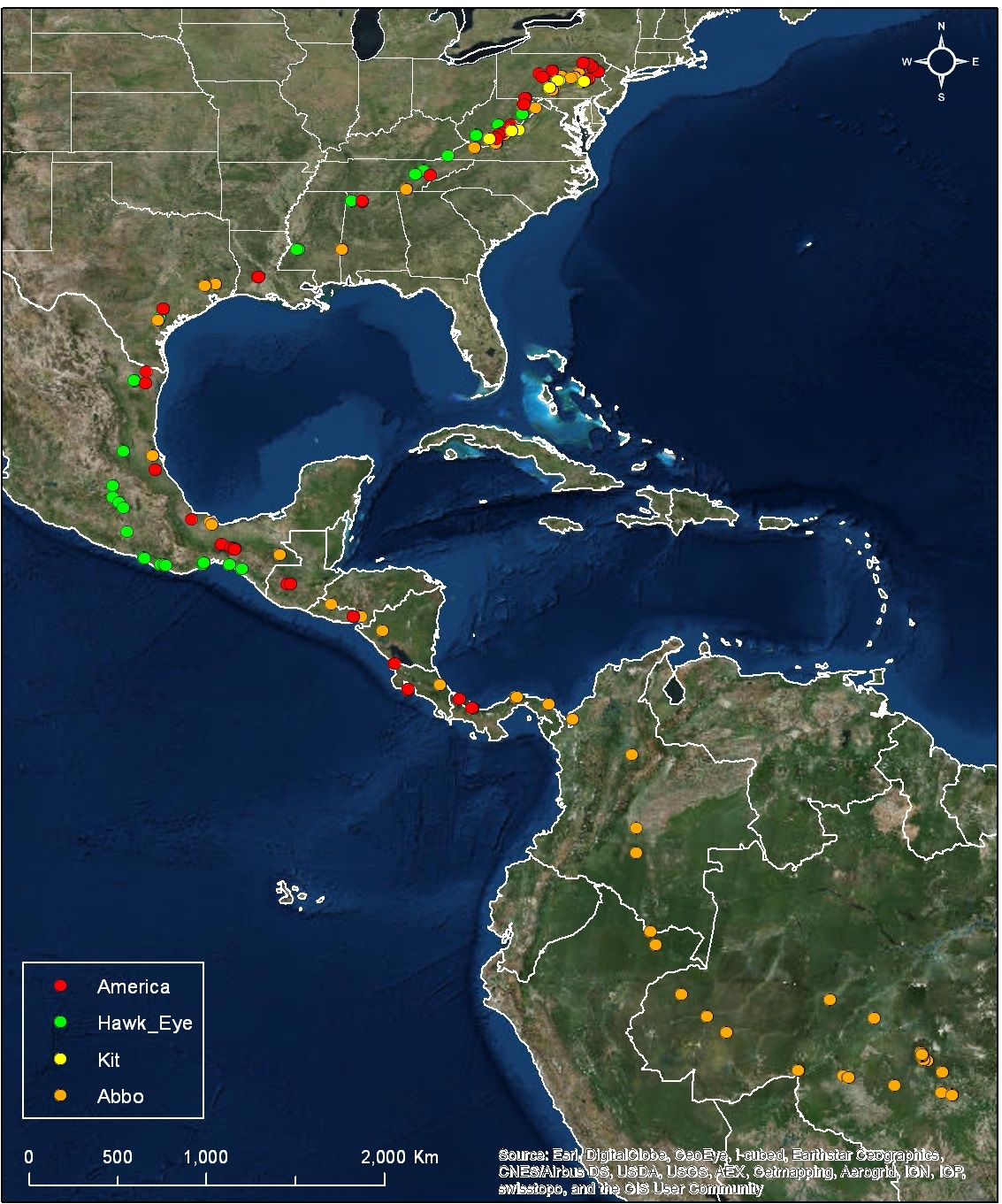 Zach Bordner
Zach Bordner
This year the Kittatinny Coalition sponsored “Ridgena”, a female Broad-winged Hawk nesting on the Kittatinny Ridge, to support Hawk Mountain Sanctuary’s 2015 Broad-winged Hawk Project. Through satellite telemetry, join us in watching Ridgena and two to four other broadwings to learn more about their nesting habits and valiant eight to ten-week journey to Central and South America.
Broad-winged Hawks are very secretive and rarely seen during nesting. As part of Hawk Mountain’s project, staff members search the woods in the spring to locate broadwing nests that can be as high as 90 feet up in a tree. Once the babies hatch, staff tag females with a solar-powered telemetry unit. They install a camera on one nest to collect data on prey taken and nesting behavior. After fledging, the research team takes detailedAll
Broadwing Movements 2014 measurements of nesting habitat selected by the broadwings. The cameras and satellite units give us a sneak peek into the broadwing’s life, including the type of habitat they prefer, where they build their nest, how often and what they feed their young, when the broadwings begin their migration, and where Pennsylvania’s birds winter. Because the Coalition sponsored a bird in 2015, we were given the opportunity to adopt and name a broadwing. Our beautiful bird is “Ridgena,” named after the Kittatinny Ridge.
This autumn, we will watch Ridgena join a large flock, one of thousands of broadwings in the sky, as they migrate to Central and South America. Through the telemetry units and mapping, we can witness their mileage acrue with excitement and cheer them on remotely. There will be surprises and threats along the way. The broadwings may meander off-course for reasons unknown to us. The Coalition’s 2014 broadwing, named “Kit” went off radar in West Virginia. Or they may encounter storms, shooting, wind turbines, deforestation, and contaminants on their journey. For example, the Kittatinny Ridge is experiencing fragmentation due to commercial and residential development and pipeline infrastructure, which exposes the birds to new threats and reduces the amount of food available to them. The technology gives us a better understanding of the conservation challenges facing this long-distance migrant.
While we are donning winter coats in mid-November, and if all goes as genetically planned, the broadwings will arrive at their warm, southern destination. In 2014 one broadwing, “Abbo”, made it to Brazil and back as indicated on the map below. She arrived at her winter territory in early November and started heading north in February, crossing the “Welcome to Pennsylvania” line in early May.
Which broadwing will fly the farthest in 2015? Tune in and watch! You can monitor the broadwings’ progress by visiting the Hawk Mountain website and blog, or check out the Facebook for daily and weekly postings. Hawk Mountain Sanctuary gladly accepts donations toward The Broad-wing Hawk Project. For online donations, select RESEARCH, and state in the comments at the bottom of the form that the donation is for the “Broadwing Project” or Broad-winged Hawk research.
